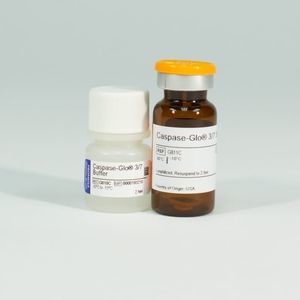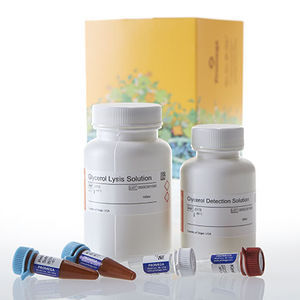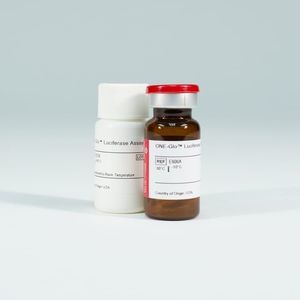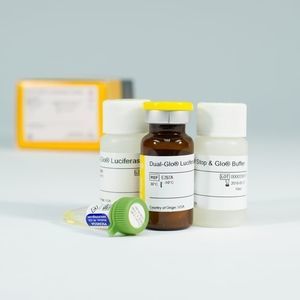
- Laboratory
- Laboratory medicine
- Diabete test kit
- Promega France
Glucose uptake assay kit Uptake-Glo™for medical researchfor cancersfor diabetes


Add to favorites
Compare this product
Characteristics
- Applications
- for medical research, for cancers, glucose uptake, for diabetes
- Tested parameter
- glucose, 2DG6P
- Sample type
- cell
- Analysis mode
- bioluminescence, colorimetric, automated
Description
Homogeneous protocol
Achieve sensitivity with broad linearity
Reliable and reproducible results
Measuring Glucose Uptake
Glucose metabolism is a key process in many organisms. A lack of insulin-stimulated glucose uptake is associated with type 2 diabetes, while high glucose uptake is a sign of the high glycolytic rates associated with cancer. Measuring glucose uptake can determine the effects of various treatments for diabetes and cancer.
The gold standard method of assaying glucose uptake relies on detection of radio-labeled glucose analogs. Alternative colorimetric and fluorometric glucose uptake assays often lack the sensitivity and robustness needed to reliably measure glucose uptake in cells.
A Simple, Non-Radioactive Glucose Uptake Assay
The Glucose Uptake-Glo™ Assay is a plate-based, homogeneous bioluminescent method for measuring glucose uptake in cells, based on the detection of 2-deoxyglucose-6-phosphate (2DG6P).
Simple, homogeneous protocol: After addition of 2DG, there are no wash steps—all steps are additions.
Sensitive with broad linearity: The Glucose Uptake-Glo™ Assay can detect 0.5–30µM 2DG6P, and generates a signal-to-background > 3 with as few as 5,000 cells.
Compatible with automation: The “add-mix-measure” format is compatible with automated and high-throughput workflow; reactions are scalable for use in 96- and 384-well plates.
Reliable and reproducible: The Glucose Uptake-Glo™ Assay yields Z factors > 0.5
Catalogs
Cell Health Metabolism
9 Pages
Related Searches
- Reagent kit
- Assay kit
- Solution reagent kit
- Molecular biology reagent kit
- Immunoassay assay kit
- Research reagent kit
- Laboratory reagent kit
- Diagnostic reagent kit
- Protein reagent kit
- Enzyme reagent kit
- Histology reagent kit
- Optical assay kit
- Reagent medium reagent kit
- Antibody
- Dye reagent
- Immunology reagent
- Buffer solution reagent kit
- Fluorescence assay kit
- PCR reagent kit
- Blood sample reagent kit
*Prices are pre-tax. They exclude delivery charges and customs duties and do not include additional charges for installation or activation options. Prices are indicative only and may vary by country, with changes to the cost of raw materials and exchange rates.




















